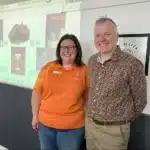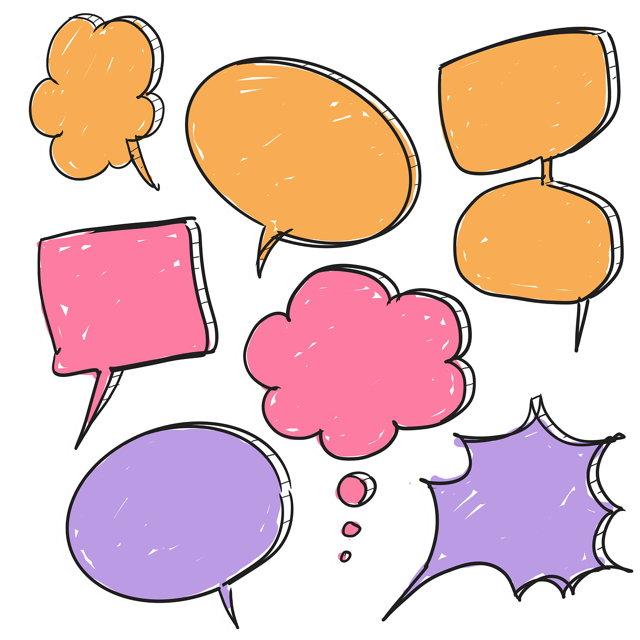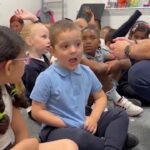When the children start school there’s always a wide range of needs, whether they are additional or circumstantial. Last year, for example, I had an EAL student who had no grasp of English when he started. To factor in each pupil’s requirements, the lesson planning was getting quite lengthy and I found it was taking more and more time to prepare. I needed something that would bridge the gap of the language barrier between myself and the little boy, as I didn’t know his language. I needed to build my children’s confidence to speak within our group, to develop language focusing on topical conversations.
Contents
First hearing of Chatta
I first heard about the Chatta approach in a staff meeting one evening. Chatta had already been implemented in the senior school, and the SLT wanted to use it across the rest of the school.
I remember the training so well. I was sitting in awe and just thinking wow, if they can make me sit there and make me want to have it NOW, then it must be special. I couldn’t wait to try it. By the next day I had a login and was up and running, it was so easy.
Seeing it in practice
Once I saw the Chatta approach in action, I was amazed – the Chatta teacher came in and I’d briefed him before to be mindful of a few of the children, and warned him not to expect a few of the others to speak. Before the demonstration session I was a little fearful that my class was going to let me down. The class wasn’t very consistent, and I was afraid that all the magic I’d heard about in the training would have a much watered down impact in my own classroom.
My fears were quickly dispelled – it took seconds for hands to shoot up, and the pupils were all looking at their friends with eyes full of joy and pride. They were also really keen to record into the iPad. It was so much fun and the children loved it. When the Chatta teacher asked them to recall all of the 4 pictures they’d been shown, I must confess I thought some would struggle, and yet these hands shot up all over the place – every single one of them recalling the 4 pictures. It was magical.
Seeing the lesson in action made me eat my previously cautious words. The Chatta teacher was pretty much a stranger to the class, and yet they were interacting confidently, and the whole class was engaged far beyond anything that I’d thought possible.
At home time, my class was transformed, and we’d had such a lovely day. Every child ran to the door bursting to tell their parents just how much they’d done. Often when parents collect, children will say “I can’t remember” – and yet the fact that they were sprinting to the door to share their excitement tied it up for me, I just knew that I needed to bring this approach into the classroom as soon as possible.
Implementing Chatta in the classroom
When I first implemented Chatta, I focused on using it around storytime. I would use it for re-telling a story, or character descriptions, taking images of the book and re-telling the story in that way.
Around the same time, some research had produced quite a shocking figure of how many families were using Amazon Alexa to read a story at night time. I remember how special and exciting the books were from my childhood, and the magic of having a bedtime story. I wondered how many homes may not have access to these books, and so I used Chatta to share the images of the story and to retell the story, so that they could enjoy it at home. This meant that the parents could share with the story enjoyment too.
A whole class approach for all subjects
As I started to gain confidence delivering lessons in this way, I tried it in different areas of the EYFS curriculum. I’d go into character descriptions, or describe things in the classroom, then describe us – our features, what we look like, all part of the curriculum. These uses then led to instructions – for example in PE – first we take off our shoes, then our socks etc. – giving instructions with a verbal prompt and a visual. And of course these boards can be replayed which makes it perfect for pupils who struggle to recall information for any reason.
It grew and grew – so I could do retellings of school trips, and then I could start using it to prepare and talk the children through preparation for a trip so that they knew what to expect – where we’re going, expectations, what we’re doing.
So now I’ve got a huge catalogue of ideas that I’ve built slowly that have grown into a vast bank. I could now be given any topic and immediately know how I’d teach it through Chatta. The beauty is that it takes absolutely no time in preparation too – win win!
Even if a teacher was to approach me about a subject I know nothing about , I could show how to use Chatta to teach it. The opportunities are endless. I know teachers that mark though it. It‘s so flexible, so versatile, it really is.
The Chatta method also ensures that I can easily track a child’s progress throughout the year, whether they’ve been physically in the classroom or not. The fact that the boards are saved, means that I can reflect at the end of the year on just how far a child has progressed, which is wonderful. It’s also a wonderful transitional tool when children move up through the year groups. I can share chats with their next teacher to show where they started, their progress to now, and what is currently at their level. There is no other tool (that I know of) available to EYFS practitioners which not only tracks but evidences children’s speaking and language development – and I’ve been teaching for ten years! Chatta has filled a HUGE gap in evidencing progress and its something that would benefit all teachers.
Brilliant for pupils and parents
The beauty of the Chatta approach is that children don’t just receive a one-off verbal instruction in a live lesson, and it’s not an instruction written by the teacher, hoping that the parents can process and ask. It’s very clear. It’s really accessible for both pupil and parents, to complete. Instead of live lessons and the issues that arise when a pupil’s internet drops out at the beginning, nobody’s left behind. The information is all accessed at the same time, and makes it easy for both pupils and parents to engage.
Using Chatta to deliver remote learning means nothing is ‘lost in translation’ through a teacher’s notes or lesson plan uploaded into the files for parents/children to read. Delivering through Chatta ensures the message is clear, the instructions are sequenced in order and so the learning outcome and expectations are understood. If someone needs to re-hear part 3 of the activity again, in a live lesson that is lost and there isn’t time to ‘re-cap’, whereas with Chatta they can just hit play and listen!
A helpful tool during lockdown
When we went through lockdown 1 and we had just 2 days’ warning, I already had Chatta in my arsenal as such, so I could immediately transition what I could provide in school, to helping the children at home.
The children and the families were used to receiving the Chatta boards at home, and so it was invaluable to be able to still use an element of live teaching. It meant that I could transition to this expectation of online learning in my own way.
There’s a huge amount of fear out there, given how rapidly instructions to education settings have changed this year. Teachers have had a tough year. I feel lucky, I could honestly say with each announcement coming I didn’t need to think, gosh, how can I deliver X and Y, because I already knew that I could. With Chatta we were already there.
Using Chatta has unlocked so much in my pupils
If I wasn’t using Chatta, my class wouldn’t be confident or competent speakers. The Chatta method unlocked the confidence to talk in many of my pupils. I saw not only the impact it had in curriculum sessions, but also in registration and circle time. I am in no doubt that without Chatta, the confidence to speak would still remain low.
Chatta also unlocked a lot in my EAL children, giving me a way to communicate effectively with them. I made dual language sound boards, so that we could communicate.
I’ve now used Chatta for 2 years, and I can’t imagine not using it. What Chatta does is pure magic.



